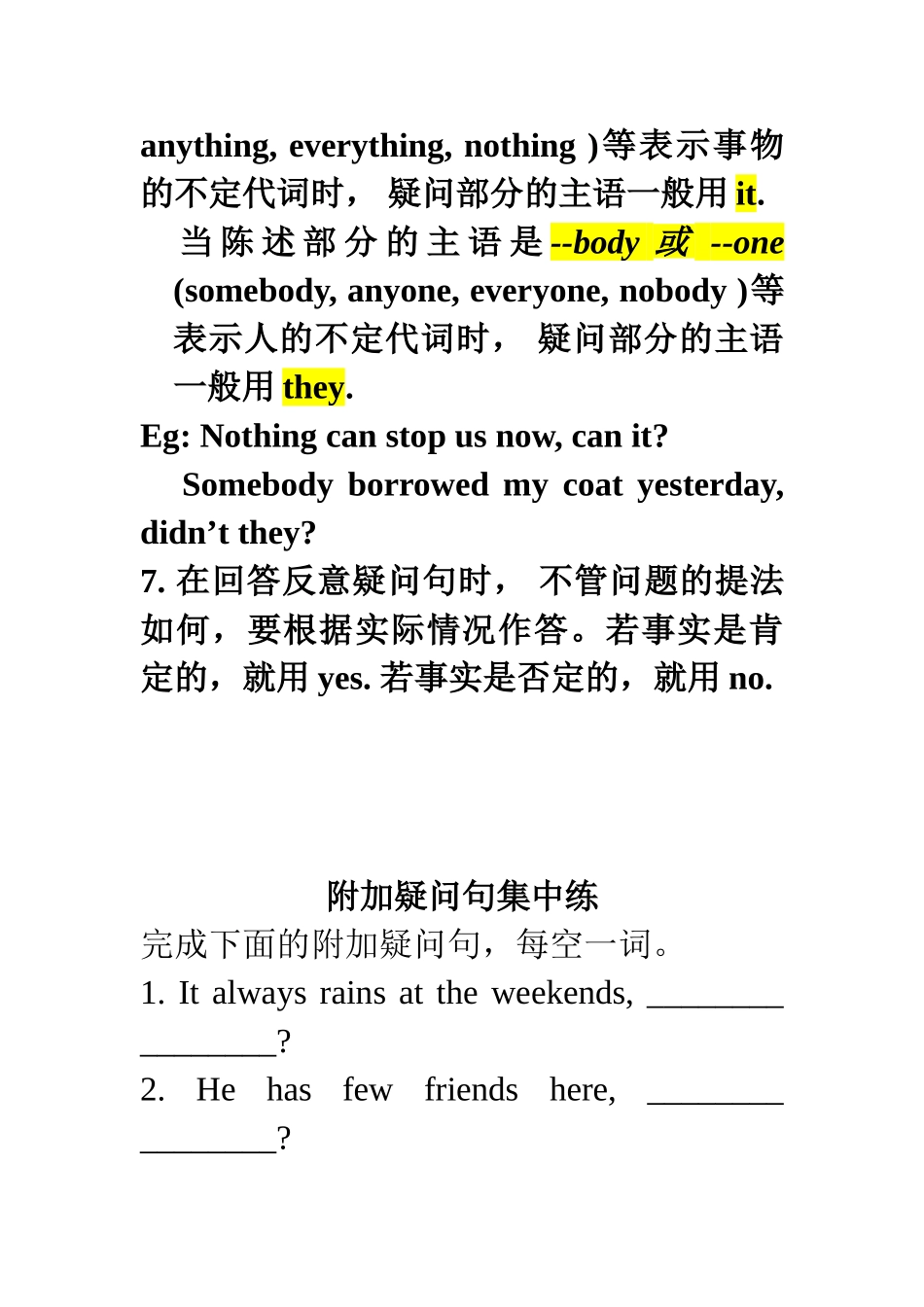附加疑问句(反义疑问句)一、含义及构成附加疑问句由“陈述句+简短问句”构成,用以要求对方证实所述之事。附加疑问句最常用的一种是反意的附加疑问句,简称反义疑问句。其遵循“前肯后否,前否后肯”的原则。二、注意事项1. 若陈述句部分是以 I am ... 开头,后面的附加疑问句要用 aren’t I。Eg: I’m your friend, aren’t I? 我是你的朋友,对吧? 2.当陈述部分含有 little, few, never, hardly, seldom, neither, none, no, nobody, nothing等否定词 时,其后的疑问部分要用肯定形式。假如陈述部分仅包含有否定意义的前缀的词时,疑问部分仍用否定形式。Eg: He can hardly swim, can he?We have little water, do we?He is unhappy, isn’t he?3.陈述部分为祈使句 时,疑问部分常用 will you.Eg: Open the door, will you? 4.陈述部分是以 let ’ s 开头的祈使句,疑问部分用 shall we;陈述部分以 let us 开头,则用 will you.Eg: Let’s go and play basketball, shall we?Let us have a rest, will you?5.假如陈述部分主句的主语为第一人称(I, we),谓语动词为 think, believe, suppose等表示主观意愿、念头或想法的词时,疑问部分要反问从句,这时需注意否定前移的情况。Eg: I think he will come to the party, won’t he? I don’t think he will come to the party, will he? He thinks they will come to the party, doesn’t he?6. 当陈述部分的主语是--thing (something, anything, everything, nothing )等表示事物的不定代词时, 疑问部分的主语一般用 it. 当 陈 述 部 分 的 主 语 是 --body 或 --one (somebody, anyone, everyone, nobody )等表示人的不定代词时, 疑问部分的主语一般用 they.Eg: Nothing can stop us now, can it? Somebody borrowed my coat yesterday, didn’t they?7. 在回答反意疑问句时, 不管问题的提法如何,要根据实际情况作答。若事实是肯定的,就用 yes. 若事实是否定的,就用 no.附加疑问句集中练完成下面的附加疑问句,每空一词。1. It always rains at the weekends, ________ ________? 2. He has few friends here, ________ ________? 3. I am a teacher, ________ ________? 4. The old man can hardly walk, ________________? 5. Something is wrong with my bike, ________ ________? 6. Everyone is ready, ________ ________? 7. There is an apple on the desk, ________ ________? 8. Close the door, ________ ________? 9. Let’s go to school together, ________ ________?10. She never goes out at night, ________ ________?参考答案: 1. doesn’t it 2. does he 3. aren’t I 4. can he 5. isn’t it 6. aren’t they 7. isn’t there 8. will you9. shall we 10. does she


